Verbs
A verb is a word that represents an action, occurrence, or state of being. Verbs are an essential part of speech and are crucial for forming sentences. They can express a physical action (e.g., run, jump, swim), a mental action (e.g., think, believe, remember), or a state of being (e.g., is, am, are).
Types of Verbs
Verbs can be categorized into several types:
- Action Verbs: These verbs express physical or mental actions. For example: run, eat, think, believe.
- Linking Verbs: Linking verbs connect the subject of a sentence to a noun or adjective that renames or describes the subject. For example: is, am, are, seem, become.
- Helping Verbs: Also known as auxiliary verbs, helping verbs are used in conjunction with main verbs to express shades of time and mood. For example: is, have, will, can.
- Transitive Verbs: These verbs require a direct object to complete their meaning. For example: eat, read, write.
- Intransitive Verbs: These verbs do not require a direct object to complete their meaning. For example: laugh, cry, run.
Study Guide
Here are some tips for studying verbs:
- Identify verbs in sentences and determine their types (action, linking, helping, transitive, or intransitive).
- Practice conjugating verbs in different tenses (present, past, future) and moods (indicative, imperative, subjunctive).
- Use verbs in context by creating original sentences or paragraphs that showcase various types of verbs.
- Learn irregular verbs and their past tense forms, as well as the past participle forms for use in perfect tenses.
- Explore phrasal verbs and their meanings to understand how verbs can be combined with particles to form new expressions (e.g., look up, give in, turn off).
Understanding verbs is essential for constructing clear and meaningful sentences. By mastering the different types of verbs and their usage, you can effectively communicate ideas and actions in writing and speech.
[Verbs] Related Worksheets and Study Guides:
.◂English Language Arts Worksheets and Study Guides Second Grade. Verbs
Study Guide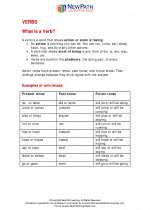 Verbs
Verbs  Activity Lesson
Activity Lesson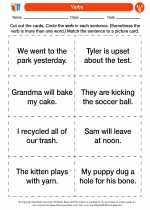 Verbs
Verbs  Activity Lesson
Activity Lesson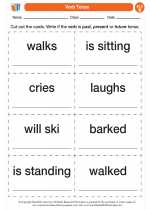 Verb Tense
Verb Tense  Worksheet/Answer key
Worksheet/Answer key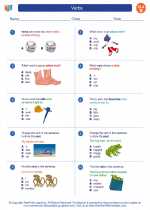 Verbs
Verbs  Worksheet/Answer key
Worksheet/Answer key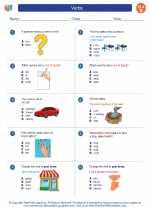 Verbs
Verbs  Worksheet/Answer key
Worksheet/Answer key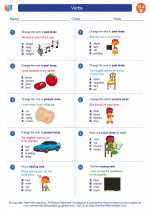 Verbs
Verbs  Worksheet/Answer key
Worksheet/Answer key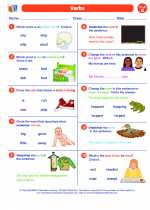 Verbs
Verbs  Worksheet/Answer key
Worksheet/Answer key Verbs
Verbs 

 Activity Lesson
Activity Lesson
 Activity Lesson
Activity Lesson
 Worksheet/Answer key
Worksheet/Answer key
 Worksheet/Answer key
Worksheet/Answer key
 Worksheet/Answer key
Worksheet/Answer key
 Worksheet/Answer key
Worksheet/Answer key
 Worksheet/Answer key
Worksheet/Answer key

The resources above cover the following skills:
Grade 2 Language Standards
Conventions of Standard English
Demonstrate command of the conventions of standard English grammar and usage as appropriate for Grade 2 when writing or speaking.
Form and use regular and irregular verbs.